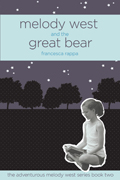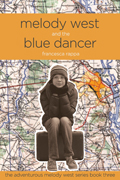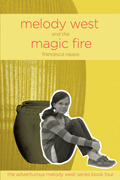Comments are closed.
Cherry Blossom
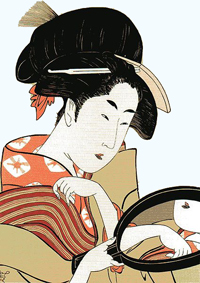
I just returned home from my trip to Japan with my friend Nobuko. Nobuko’s Aunt Hana and Uncle Kenji invited us to stay with them in Tokyo for spring break. From the get-go, I knew it was going to be fun. In the airport, Nobuko and I saw a very large man wearing a green robe called a kimono. On this feet he wore wooden clogs called geta. His long hair was pulled back into a ponytail and he was listening to music through tiny earphones. Nobuko told me this man was a sumo wrestler. Sumo is a two-thousand-year-old sport. The goal is for a nearly naked and fat wrestler to force another nearly naked and fat wrestler from the ring or make him touch the ground with a part of his body other than his feet. Nobuko told me I would see many people wearing old-time clothes in Japan, and I did.
On our first night in Tokyo we had sushi for dinner. Sushi is fresh raw fish and rice that is served in small pieces. The following morning Nobuko and I explored. We walked along a narrow, sloping road and passed by many old buildings called temples. Temples are places of worship. Near one temple we saw a large metal statue of a man sitting cross-legged with his eyes closed and his hands joined together in prayer. Nobuko told me he was a statue of a Buddha. The Japanese worship figures like this and believe they can help them in their daily lives. All around Tokyo we saw places of worship called shrines. In front of shrines there are towering gates called torii. Torii have two upright, slightly slanting pillars that are spaced far apart and joined at the top by two, long horizontal supports made of wood or stone. At one shrine I saw an older Japanese couple wash their hands and mouth in a pool. They made some kind of offering, rang the gong and bowed, clapped and bowed again. Then they wrote a message on a tablet and tied the tablet to a board. People in Japan do this so the gods they believe in will answer their prayers.
Nobuko and I were lucky to visit Tokyo during cherry blossom season. The Japanese call cherry blossoms sakura. The whole city was in a frenzy over cher ry blossoms! We went to Ueno Park one afternoon, and you wouldn’t believe how many people we saw picnicking on big blue tarps underneath the blossoms. Children chased pigeons around the cherry trees, while their mothers chased after them. Men took photographs with large cameras and tripods. Middle-aged women walked together in large groups and chatted while admiring the view.
ry blossoms! We went to Ueno Park one afternoon, and you wouldn’t believe how many people we saw picnicking on big blue tarps underneath the blossoms. Children chased pigeons around the cherry trees, while their mothers chased after them. Men took photographs with large cameras and tripods. Middle-aged women walked together in large groups and chatted while admiring the view.  Older couples walked slowly by and smiled. Even a young girl in a wheel chair and led by a nurse was enjoying the blossoms.
Older couples walked slowly by and smiled. Even a young girl in a wheel chair and led by a nurse was enjoying the blossoms.
While Nobuko and I were in Japan we learned about woodblock printing. What is woodblock printing, you ask? It’s a very old art form and craft. To make a woodblock print, an artist first carves a design into a block of wood. Then he puts ink on the block and covers the block with a piece of paper. Lastly, he presses down on top of the paper and transfers the inked design onto the surface of the paper. Aunt Hana makes woodblock prints and designs for handmade Japanese paper. We saw one of Aunt Hana’s designs in a shop nearby. We also watched her make a woodblock print of a cherry tree in bloom and the full moon.
Nobuko and I met a cute American boy named Jake, who showed us around the city. How did we meet Jake? Let’s just say there was a little matter of a shopping bag, a naughty cat, and a tumble over a high stone wall. Jake introduced us to a famous kabuki actor named Goro Nakamura. What is kabuki, you ask? Kabuki is a very old type of theater first popular in that dreamy long-ago time of powerful shoguns and high-ranking samurai and meddlesome court nobles. Who were the shoguns? Long ago shoguns were the military rulers of Japan. They took power away from the emperor, who was their king and a powerful religious figure. The samurai were the warriors who helped the shoguns gain and maintain power. The shoguns and their samurai have disappeared, but an emperor still remains on the throne. He may be powerless because nowadays elected officials run the government, but the emperor continues to be an important figure for the Japanese people.
What is kabuki exactly? Kabuki is drama with deep emotion, colorful costumes and make-up, music and dance. To help us understand kabuki better, Goro showed us a woodblock print made over two hundred years ago by the artist Hiroshige for fans of kabuki. The print was of a famous kabuki actor playing a role in a play. In the print the actor’s face is painted white with bold red lines to show his great strength and virtue. He’s wearing an armored breastplate and armguards, heavily padded robes, and colorful reddish-orange pants that balloon out from his body. Black locks of hair, hardened with wax, stick out from both sides of his face. 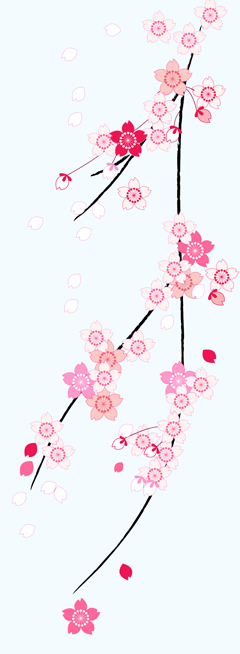 He has a long sword at his side.
He has a long sword at his side.
What else did I learn in Japan? I learned how to drink matcha, a frothy green tea. I learned about calligraphy, the art of writing Japanese letters beautifully. I also learned how to write Japanese poems called haiku. We went to a moon-viewing party one night. At the party, we composed haiku about the cherry blossoms and wrote them down on strips of paper. We recited our haiku and then tied our haiku to the bows of the trees. The sight of the trees in the light of the full moon and decorated with the strips of paper was beautiful!
Here’s what I wrote:
Falling on the grass
A cloud of fragile petals
Bittersweet and pink
My favorite day in Japan by far was the day Jake took me to the grounds of the Imperial Palace. Long ago a local chieftain chose the spot to build his castle-fortress. In time it would become the home of the shoguns. Today, the Imperial Palace is the private home of the emperor and his family. Jake and I walked under a large gate and entered the East Garden of the palace grounds. On a hill in the distance over a double-arched stone bridge was the secluded Imperial Palace. We strolled over to a walled castle moat and rented one of the rowboats tied up at the dock. As Jake slowly rowed out into the middle of the moat, the noise and congestion of the city quickly melted away. Cherry trees spread their boughs downward along the walls of the moat. Delicate pink blossoms skimmed the water below. Everything was perfectly still.
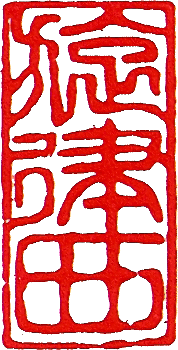 On our last day in Japan, Goro took us to the kabuki theater so we could watch the actors rehearse. Finally, he took us to Tokyo Tower so we could see Mount Fuji. Mount Fuji was perfectly shaped like a cone. It pierced through a sky that was crystal clear and blue. Nobuko said Mount Fuji was graceful. Jake said Mount Fuji was majestic. Goro said Mount Fuji was Japan’s greatest landmark. Now that I’m back home,
On our last day in Japan, Goro took us to the kabuki theater so we could watch the actors rehearse. Finally, he took us to Tokyo Tower so we could see Mount Fuji. Mount Fuji was perfectly shaped like a cone. It pierced through a sky that was crystal clear and blue. Nobuko said Mount Fuji was graceful. Jake said Mount Fuji was majestic. Goro said Mount Fuji was Japan’s greatest landmark. Now that I’m back home, 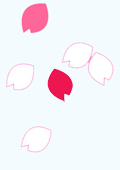 I can still see Mount Fuji in my mind. I’ll remember Japan for the rest of my life!
I can still see Mount Fuji in my mind. I’ll remember Japan for the rest of my life!
~ mTw ~
Filed under | Comments Off on Cherry Blossom
